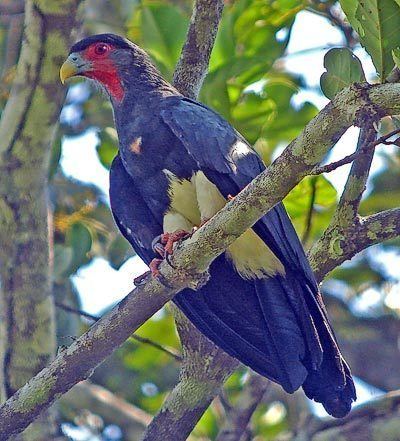Subfamily Polyborinae Scientific name Ibycter americanus Higher classification Ibycter | Genus IbycterVieillot, 1816 Phylum Chordata Rank Species | |
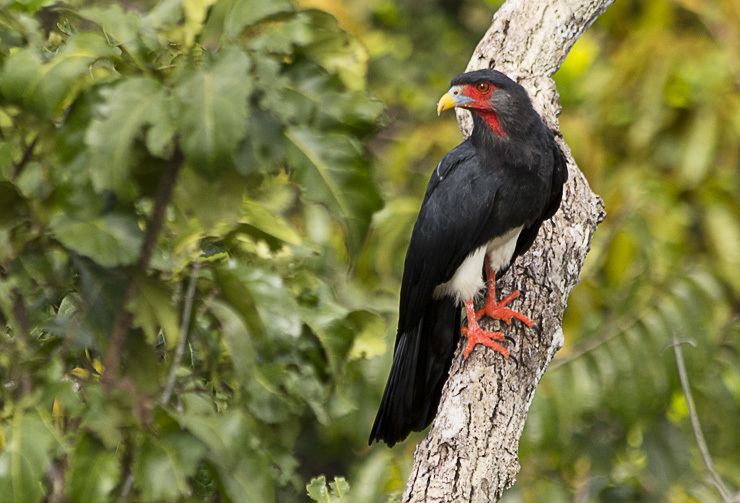 | ||
Similar Black caracara, Forest falcon, Barred forest falcon, Falconidae, Laughing falcon | ||
Red throated caracara predation behaviour
The red-throated caracara (Ibycter americanus) is a social species of bird of prey in the family Falconidae. It is placed in the monotypic genus Ibycter, or sometimes united in Daptrius with the black caracara. Unique among caracaras, it mainly feeds on the larvae of bees and wasps, but also takes the adult insects and fruits and berries.
Contents
- Red throated caracara predation behaviour
- Red throated caracara attacks polybia scrobalis
- Diet
- Description
- Habitat
- Behavior
- References
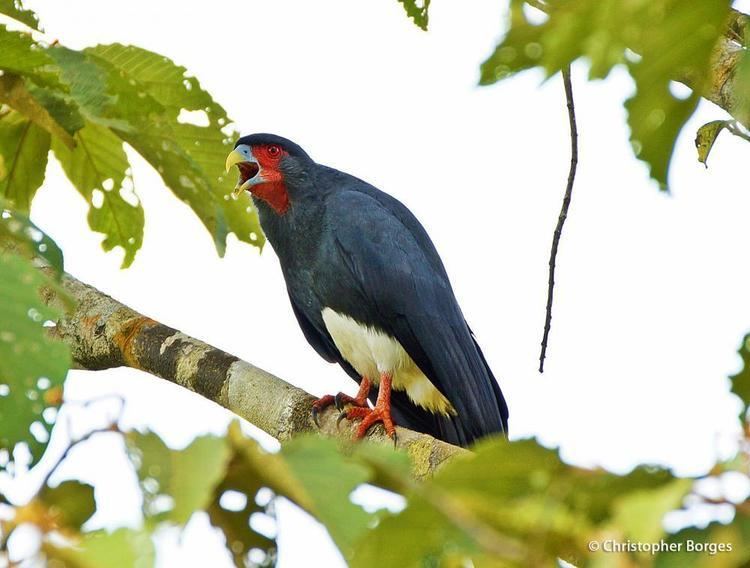
It is found from Mexico south to Venezuela in most of Central and South America. Its natural habitats are subtropical or tropical moist lowland forests and subtropical or tropical moist montane forests.
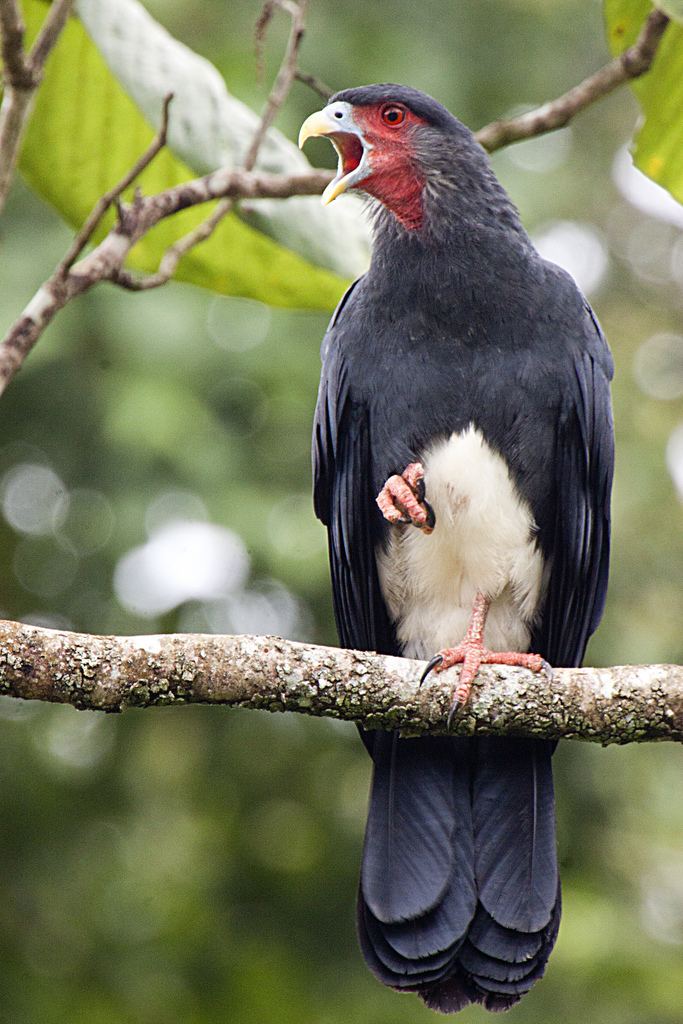
Red throated caracara attacks polybia scrobalis
Diet
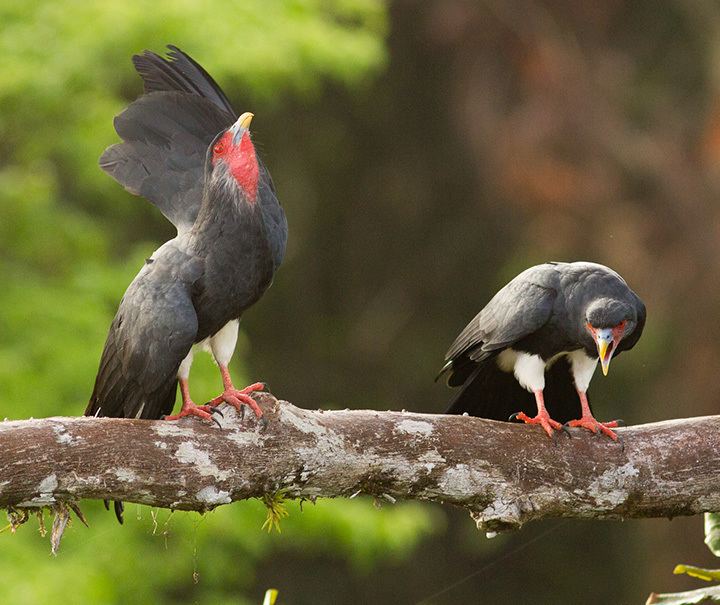
The red-throated caracara’s diet consists mainly of wasp and bee larvae, though it will eat mature insects and also forage on fruits and berries found in the humid subtropical and tropical lowlands, and mountainous regions of its Central and South American habitat. Biodiversity of the forest ecosystem is paramount for the birds' special diet, since wasps and bees often make their nests in hollows or amongst branches of mature trees found in old-growth forests. Deforestation and intensive agriculture practices severely hamper the red-throated caracara’s population, likely accounting for its rare sightings today. After the 1950s, both its population and range rapidly declined in Costa Rica, Honduras, Panama, Ecuador, and French Guiana, causing the species to be placed on the World Wildlife endangered list. Until 2013, very little was known of the red-throated caracara’s feeding behavior until a team of Canadian biologists from the University of Simon Fraser spent months researching the birds using camera surveillance at the Nouragues Field Station in French Guiana. The scientific footage shows the birds using a rapid-fire “fly-by” aerial-diving attack strategy to knock nests down onto the forest floor, while skillfully evading most wasp stings. The birds use air squadron precision, repeatedly diving then scooping upward, to drive off or confuse angry defender swarms around the hive. Researchers also found that neotropical defender wasps eventually abandon their damaged hives and retreat, alongside smaller worker wasps, to rebuild a new nest site. All predators evolve ways of hunting or trapping prey. Biologist Sean McCann observed that these intelligent birds have a highly specialized predation trait in response the wasps’ behavior to cut losses and rebuild elsewhere. The predation impact on the numbers of prey populations is undetermined. Furthermore, it is not clear how much the red-throated caracara’s primary food source, wasp larvae, places constraints on the birds' ability to survive since their complex predation is interlinked with neotropical wasp behavior. Knowledge of the birds' chemical resistance to stings is also unknown. Chemical traces found on the birds’ feet are similar to those secreted from Azteca ants, likely contacted along tree branches and nest sites which both species inhabit.
Description
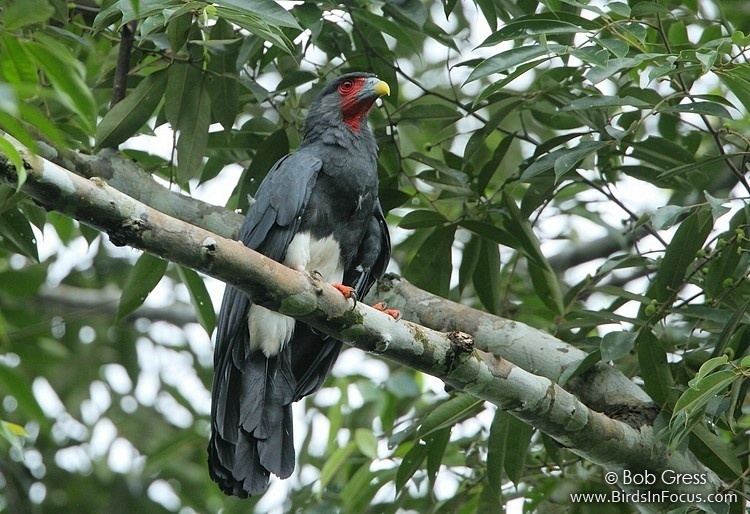
Males average 20.1 in (51 cm) long, while females average 22.1 in (56 cm); they are distinguished from the black caracara by larger size and plumage that is mainly black, with the belly, tibal feathers, and undertail feathers being white. Both their faces and throats are bare with a few black feathers scattered on the throat; the exposed skin is red. Both male and female red-throated caracaras are similar in appearance. Males have a wing length of 35.55 cm, a tail length of 24.96 cm, a bill length of 2.5 cm, and a tarsus length of 5.41 cm. Females have a wing length of 35.93 cm, a tail length of 25.31 cm, a bill length of 2.58 cm, and a tarsus length of 5.62 cm.
Habitat

This species inhabits the humid lowland forests of Bolivia, Brazil, Colombia, Costa Rica, El Salvador, Ecuador, French Guiana, Guatemala, Guyana, Honduras, Mexico, Nicaragua, Panama, Peru, and Venezuela. The slow flight of the red-throated caracara makes it suited it to fly in the understory of the forest where the vegetation is thin. The sparse vegetation gives the red-throated caracara greater visibility to spot food and predators. The ornate hawk-eagle and the black-and-white hawk-eagle are predators of the red-throated caracara.
Behavior

The red-throated caracara hunts in the canopies and the understory of the lowland jungle, foraging mainly for insect nests. Most red-throated caracaras hunt silently, but occasionally make soft caws and sometimes hunt in groups. When hunting in groups, one or two individuals scout for predators in the canopy, while the remaining flock hunts in the understory. The red-throated caracara is highly territorial, with four to eight individuals in a group.
